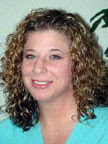Searching for Perfect Candidate
May Miss the Perfect Match
When hiring managers begin to write the list of qualifications, they build lists of everything they think they want in a candidate. It's a process not unlike building a dating profile; pulling characteristics out of the air to describe the perfect match. In dating, people tend to understand that finding someone who matches that description is unlikely. When they find someone they like, it is almost a coincidence when they match even the broadest elements of the original profile.
By contrast, hiring managers frequently use far less latitude in their candidate searches. The descriptions involve far more precise requirements and they are less likely to waiver on them should someone outside of the criteria apply.
"Using vetting of candidates based on stringent requirements can keep out the candidates who have no place in an organization, but there isn’t an automated filter that is going to increase your ability to identify, much less attract impact players to your organization," says Rob Romaine, president of MRINetwork. "There isn't an accredited Master of Innovative Thinking degree or Doctorate of Self Starting, and a resume that claims someone has such qualities only means they know those skills are important."
 The 8.2 percent national unemployment rate, and even the 3.9 percent bachelor's degree and higher unemployment rate, seem to still give employers a false sense of plentiful candidate supply. It's like the man stranded on a tropical island, surrounded by salt water — yet dying of thirst. The 8.2 percent national unemployment rate, and even the 3.9 percent bachelor's degree and higher unemployment rate, seem to still give employers a false sense of plentiful candidate supply. It's like the man stranded on a tropical island, surrounded by salt water — yet dying of thirst.
"In the early days of the recession, we saw amazing candidate availability. Top candidates truly were victims of circumstance — doing great work but losing their positions regardless — and became available on the active candidate market," notes Romaine. "But a type of reverse osmosis has had time to set in. The most desirable candidates found new positions. Today's unemployed population — especially the professional space — largely consists of people whose skills and education doesn’t match with the needs of the marketplace.
More than 22 percent of the U.S. workforce is in a professional or related occupation, but less than 11 percent of the 12.2 million people unemployed in May have professional experience. That translates to just 1.3 million lawyers, engineers, economists, computer programmers and more who are unemployed today and actively looking for a job. If you widen the net to include managers and financial professionals, the statistic grows to 38 percent of the U.S. workforce but still less than 19 percent of the unemployed population.
"When talking casually to hiring managers they know how tight the market is, they understand that of the 1.3 million professionals who are unemployed, they are unlikely to find that one person with fifteen years of wind propulsion experience who is willing to relocate to them," says Romaine. "But as soon hiring a candidate leaves the abstract and interviews are being conducted, managers start looking at the 8.2 percent unemployment rate or the 17.9 underemployment rate and hold out for a candidate who matches the detailed profile they’ve written. By holding the line so tightly, though, they will often overlook someone who could actually be their perfect match."
|
July 2012 | Issue 7 | Vol. VI

Management Recruiters of Vancouver, LLC
700 Washington St, Suite 508
Vancouver, WA 98660

The trends in the employment data aren't surprising to Jack Downing, a managing partner with the job placement firm MRINetwork WorldBridge Partners.
In the past six months or so, Downing said he's started to see such high demand for college graduates, particularly in fields such as engineering and information technology, that some candidates are fielding multiple job offers.

 French unemployment reached 10 percent in April, its highest point since late 1999. Socialist President Francois Hollande replaced Nicolas Sarkozy on May 15, and has been tasked with righting Europe's second largest economy. Via Reuters. French unemployment reached 10 percent in April, its highest point since late 1999. Socialist President Francois Hollande replaced Nicolas Sarkozy on May 15, and has been tasked with righting Europe's second largest economy. Via Reuters.
 In China, college graduates are expected to be entering one of the toughest labor markets in recent memory just as graduation rates in the country begin to explode. Between 2008 and 2011, the number of newly minted college graduates grew from 5.6 to 7.7 million. State media points out, however, that college enrollment ratios are still far lower than in many western countries. Via China Daily. In China, college graduates are expected to be entering one of the toughest labor markets in recent memory just as graduation rates in the country begin to explode. Between 2008 and 2011, the number of newly minted college graduates grew from 5.6 to 7.7 million. State media points out, however, that college enrollment ratios are still far lower than in many western countries. Via China Daily.

 BLS Employment Situation Report: May 2012 BLS Employment Situation Report: May 2012
Total employment in the U.S. grew by 69,000 positions in May and unemployment grew for the first time in more than a year from 8.1 to 8.2 percent as nearly half a million high school and college graduates entered the workforce.
 Japanese culture plays major role in hiring process Japanese culture plays major role in hiring process
 Expert: Hiring process must be thorough Expert: Hiring process must be thorough
 Obama administration seeks to increase hiring Obama administration seeks to increase hiring |
